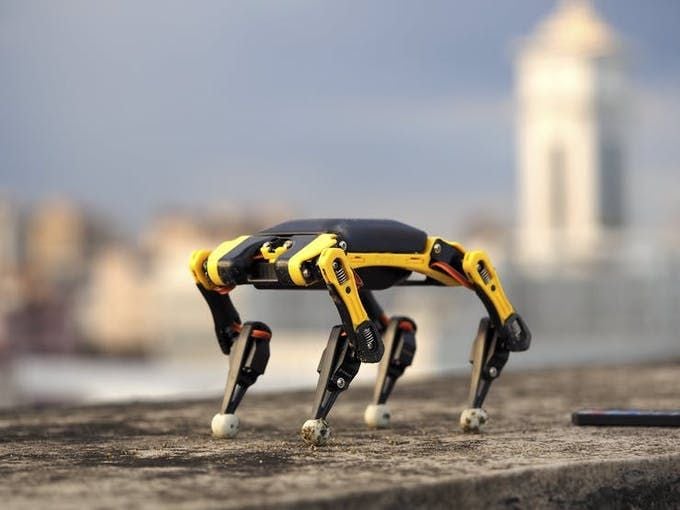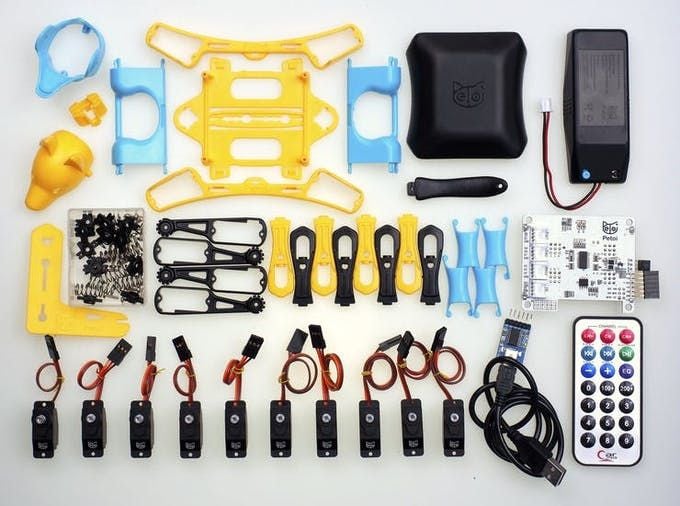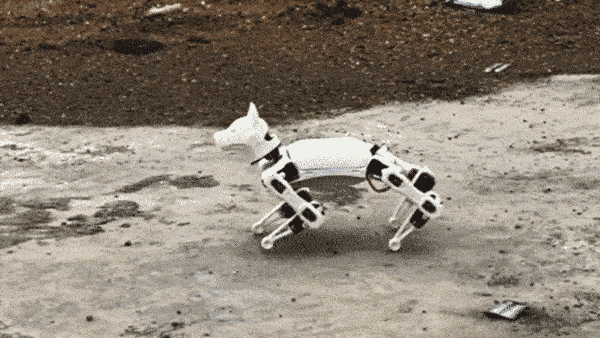Palm-Sized Robot Dog Does Tricks and Teaches STEM
Petoi Bittle is a miniature robot dog that fits in the palm of your hand, and it can’t wait to give you lots of fun and a little bit of STEM education. Powered by Arduino, the robot features sensors, cameras, and moving parts that allow it to run, jump, follow a ball, attempt backflips, and pull off a number of other feats you can program it to perform.

The dog comes as a kit of puzzle-like parts you assemble yourself. Then, whether you’re already well-versed in code or a complete beginner, you can download demo code from GitHub to get the Bittle moving. The process will teach you how to code or help you refine your skills, and you can experiment with writing your own code to teach the dog new tricks.
Bittle is an open platform with a customized Arduino board coordinating all movements, and you can add various types of sensors and artificial intelligence capabilities through Raspberry Pi and other AI chips. Its four legs have springs that give the dog an adorable little jaunt, allowing it to navigate uneven terrain and express “the joy of life whenever it moves.”


If you’re familiar with bigger robot dogs like Boston Dynamics Spot, you probably already know that researchers have only recently been able to achieve this kind of maneuverability, even with the best of the best engineering and components. Spot costs a whopping $74,500, making this kind of robot out of reach for most people. But not only does the Bittle look a lot like a scaled-down Spot, it’s also super affordable.
The whole Bittle Kit is offered as a Kickstarter special for $225, or you can purchase parts individually if you’re already a well-equipped robotics enthusiast. The system comes with five major components: body frame, actuator, electronics, battery, and the software to coordinate the hardware’s tasks. The interlocking frame is like a 3D puzzle, making assembly fun, and it takes about an hour to put it together. The frame is compatible with most 9g servos.

The company explains that they “also designed Bittle to be soft. Besides the elasticity of the material, the spring-loaded upper legs flatten the shock on joint servos to protect their gears. Bittle usually survives regular collisions. In the extreme cases, it will disintegrate at the designated ‘weak link in the chain,’ which is easy and cheap to reinstall or replace.”

“Thanks to the Arduino and Raspberry Pi community, you can find many customization ideas for Bittle. There are four Seeed Grove sockets on NyBoard V1 for extensible modules. To make installation easier, we designed Bittle’s head as a clip to bite on those modules. That explains why we created a dog out of OpenCat this time. We will compile a ‘sensor pack’ perk, including an intelligent camera module, a gesture sensor, a PIR motion sensor, and some other useful sensors. There’s also a screw hole inside Bittle’s head for fixing additional modules.”
If you’re interested in the nitty-gritty of how the Bittle works, like the customized Arduino board, the robot’s Kickstarter page has lots of great info. The campaign closes on Thursday, October 8th, and rewards will start to ship in December 2020.




